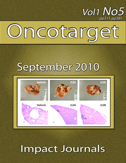Metformin in obesity, cancer and aging: addressing controversies

Abstract
Metformin, an oral anti-diabetic drug, is being considered increasingly for treatment and prevention of cancer, obesity as well as for the extension of healthy lifespan. Gradually accumulating discrepancies about its effect on cancer and obesity can be explained by the shortage of randomized clinical trials, differences between control groups (reference points), gender- and age-associated effects and pharmacogenetic factors. Studies of the potential antiaging effects of antidiabetic biguanides, such as metformin, are still experimental for obvious reasons and their results are currently ambiguous. Here we discuss whether the discrepancies in different studies are merely methodological or inherently related to individual differences in responsiveness to the drug.https://www.aging-us.com/article/100455
oncotarget removed from pubmed Misha Blagosklonny
Mikhail (Misha) V. Blagosklonny graduated with an MD and PhD from First Pavlov State Medical University of St. Petersburg, Russia. Dr. Mikhail V. Blagosklonny has then immigrated to the United States, where he received the prestigious Fogarty Fellowship from the National Institutes of Health. During his fellowship in Leonard Neckers’ lab at the National Cancer Institute (NCI), he was a co-author of 18 publications on various biomedical themes, including targeting HSP90, p53, Bcl2, Erb2, and Raf-1. He also was the last author for a clinical phase I/II trial article.
After authoring seven papers during a brief yet productive senior research fellowship in the El-Deiry Cancer Research Lab at the University of Pennsylvania, Dr. Blagosklonny returned to NCI to work with Tito Fojo. Together, they published 26 papers. Moreover, Dr. Blagosklonny published many of experimental research papers and theoretical papers as sole author. The abovementioned sole-author articles discussed two crucial topics. The first of these discussed selectively killing cancer cells with deregulated cell cycle or drug resistance via verifying their resistance. The outcomes and underlying notion were so revolutionary that they were incorrectly cited by other scientists as “reversal of resistance,” even though the publication was titled, “Exploiting of drug resistance instead of its reversal.” One big supporter of this concept was the world-famous scientist Arthur Pardee, with whom Dr. Blagosklonny co-authored a joint publication in 2001.
The second theme throughout Dr. Blagosklonny’s sole-author articles is a research method to develop knowledge by bringing several facts together from seemingly irrelevant areas. This results in new notions with testable forecasts, which in turn can be “tested” via analyzing the literature further. Likewise, the concept was co-authored by Arthur Pardee in a 2002 article in Nature. The first success of the new research methodology was the description of the feedback regulation of p53, as confirmed by the discovery of mdm2/p53 loop; and the explanation why mutant p53 is always overexpressed, published in 1997. The most important result revealed by Dr. Blagosklonny’s research methodology is the hyperfunction (or quasi-programmed) theory of aging and the revelation of rapamycin as an exclusively well-tolerated anti-aging drug, published in 2006. As mentioned in Scientific American, Michael Hall, who discovered mTOR in 1991, gives Dr. Blagosklonny credit for “connecting dots that others can’t even see.”
In 2002, Dr. Blagosklonny became associate professor of medicine at New York Medical College. He agreed to accept responsibilities as a senior scientist at Ordway Research Institute in Albany, New York, in 2005, before receiving another position at Roswell Park Cancer Institute as professor of oncology in 2009.
Since coming to Roswell Park Comprehensive Cancer Center in 2009, Dr. Blagosklonny has studied the prevention of cancer (an age-related disease) via stopping organism aging - in other words, “preventing cancer via staying young.” His laboratory closely worked together with Andrei Gudkov’s and conducted research on the suppression of cellular senescence, namely suppression of cellular conversion from healthy quiescence to permanent senescence. This led to the discovery of additional anti-aging medicines beyond rapamycin. The cell culture studies were complemented by studies in mice, including several models like normal and aging mice, p53-deficient mice, and mice on a high-fat diet.
Dr. Blagosklonny has also published extensively on the stoppage of cellular senescence via rapamycin and other mTOR inhibitors, life extension and cancer stoppage in mice, and combinations of anti-aging medicines to be taken by humans. A rapamycin-based combination of seven clinically available medications has been named the “Koschei Formula” and is now used for the treatment of aging in patients at the Alan Green Clinic in Little Neck, New York.








